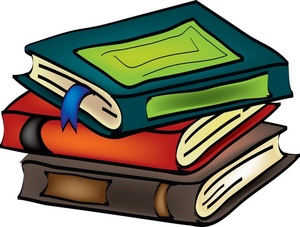What do book lovers have queued up on their nightstands and ready to read before lights-out? We asked one of them, and here’s what she said.

Randon Billings Noble:
I’m an essayist, so I read a lot of essay collections. I love to dip into other essayists’ minds, their lives, their different ways of thinking. But I often find it hard to read a collection straight through. It’s almost too much — too overwhelming — to spend 200 pages together no matter how wonderful those pages are. Instead, I like to visit, read an essay or two, linger for a while, and then leave so I can soon return.
Right now, I’m in the middle of several collections:
How to Slowly Kill Yourself and Others in America by Kiese Lamon. The title essay begins: “I’ve had guns pulled on me by four people under Central Mississippi skies — once by a white undercover cop, once by a young brother trying to rob me for the leftovers of a weak work-study check, once by my mother, and twice by myself.” The collection just takes off from there. I can’t wait to read more, and then read his memoir, Heavy.
I’ll Be Your Mirror: Essays and Aphorisms by David Lazar. This collection is like a feast with courses you want to savor slowly. The essays range in subject from sex to death, singing and celebrity, gender and legacy. But it’s the voice of these essays that charms me. Like this, from the start of “Brigadoon Bowling”:
“I have gradually lost most of my sports over the years, but still, I may be the only person on record to use bowling as a remedy for anxiety…When I mention bowling in mixed company, people, especially women, think I can’t be serious since bowling is to some people a kind of joke sport or not a sport at all but, rather, an ‘activity,’ like miniature golf or pinball…But this was not the culture I grew up with in Brooklyn.”
This is a voice — and a mind — I want to follow down that alley, bowling or otherwise, back to Brooklyn and wherever else it might lead.
Lost Wax by Jericho Parms. The title of this book refers to a casting method used by sculptors; its cover shows a blind contour drawing of Daphne (likely Bernini’s version) at the moment she is transformed into a tree. The essays inside all use art as a way of thinking about memory, identity, love, and loss. What do we run from? What do we grow towards? Like Daphne caught in this hybrid moment, these essays encompass all the messy contradictions of what it means to be alive. “Haven’t we all fed on the strange beauty of our findings, spun such strangeness into stories, secrets, silence…? Don’t we live to glide along invisible currents, swearing we will find, somewhere on earth, some familiar beacon that knows us?” These essays say yes.
16 Pills by Carley Moore. I’m just about to start this collection, but I peeked so I could tell you that many of these essays play with form. Some are told in segments, another is organized by the 16 pills of the title, and the content ranges — widely and wonderfully — from nitpicking to sex, and from illness to protest. And those are just four of the 16.
When I’m stressed or very tired, I like to read just a few pages that can stand on their own. Late last year, I started reading May Sarton's diary, The House by the Sea, which chronicles a year of her life living alone off the coast of Maine. She writes about the changes in weather, in mood, in the world, and in her writing. I like to read along with her — February’s entries in February, March’s in March, etc.
But my favorite book to read in bits and pieces is The Secret Lives of Color by Kassia St. Clair. Just opening the book is a treat — it has strips of color down the side of each page so you can flip through and choose which hue you want to read about before you even know what it’s called. Among the shades of white are ivory, isabelline, and chalk; among the blacks are ink, jet, and kohl. And in the middle are shades like gamboge (a yellow), amaranth (a pink), archil (a purple), and mummy (a brown). Each color has a story, of course, in which you learn that isabelline is named after a contemporary of Elizabeth I and mummy was once made of mummies. My favorite color in this collection might be puce, a combination of pink, brown, and grey, which King Louis XVI, when he saw it on Marie Antoinette, tried to shame her out of wearing by calling it “the color of fleas.” The color, however, became a trend that followed them to the end: One of the few gowns she was allowed in prison before her execution was this — puce — flea.
How can you put books like these down? That’s why I like to keep them on my nightstand — within reach.
Randon Billings Noble is an essayist. Her full-length essay collection, Be with Me Always, will be published by the University of Nebraska Press on March 1st, and her lyric essay chapbook, Devotional, was published by Red Bird in 2017. She is the founding editor of After the Art, an online literary magazine that publishes essays that explore the relationship between reading and art.

